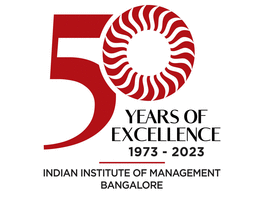Please use this identifier to cite or link to this item:
https://repository.iimb.ac.in/handle/2074/20271| DC Field | Value | Language |
|---|---|---|
| dc.contributor.advisor | Patibandla, Murali | |
| dc.contributor.author | Kumar, Ravi | |
| dc.contributor.author | Khorwal, Tara Chand | |
| dc.date.accessioned | 2021-07-24T08:55:13Z | - |
| dc.date.available | 2021-07-24T08:55:13Z | - |
| dc.date.issued | 2015 | |
| dc.identifier.uri | https://repository.iimb.ac.in/handle/2074/20271 | - |
| dc.description.abstract | Indian Prime Minister Shri Narendra Modi, wants to transform India into a manufacturing hub, which is evident in his vision of ‘Make in India’. The Make in India initiative was launched by Indian government on 25 September 2014 to promote domestic and multinational firms to manufacture in India. It aims to promote investment, innovation, skill development and building state of the art infrastructure to boost manufacturing in India. The initial focus was on 25 major sectors of the Indian economy including automobiles, IT, chemicals, leather, aviation, tourism etc. The first prime minister of Singapore Lee Kuan Yew said that no nation in the world has become a major world economic power without becoming a manufacturing power. The need for ‘Make in India’ is evident from the fact that India’s manufacturing sector is underdeveloped. India jumped from a primarily agrarian economy to a service economy without focusing on manufacturing. However, this economic model is not sustainable in the long run as services requires skilled workforce, whereas India’s competitive advantage is low skilled workforce. Another important factor to look at is the contribution of primary sector to the Indian economy. The primary sector employs nearly 50% of the Indian workforce and contributes around 19% to the GDP (Gross Domestic Product). This can be seen in Figure 1. The secondary sector employs around 24% and contributes around 32% to GVA (Gross value added). The services sector employs 27 % of the workforce and contributes nearly 50% to GVA. The productivity of the primary sector is very low as compared to manufacturing and services. So, there is a need to shift to non-primary sectors. India’s competitive advantage being the low skilled workforce, manufacturing sector can provide a platform for utilizing the demographic dividend of India. | |
| dc.publisher | Indian Institute of Management Bangalore | |
| dc.relation.ispartofseries | PGP_CCS_P15_185 | |
| dc.subject | Manufacturing industry | |
| dc.subject | Make in India | |
| dc.subject | Manufacturing hub | |
| dc.subject | Investment | |
| dc.title | Make in India: Transformation of Indian manufacturing | |
| dc.type | CCS Project Report-PGP | |
| dc.pages | 20p. | |
| Appears in Collections: | 2015 | |
Files in This Item:
| File | Size | Format | |
|---|---|---|---|
| PGP_CCS_P15_185.pdf | 436.53 kB | Adobe PDF | View/Open Request a copy |
Google ScholarTM
Check
Items in DSpace are protected by copyright, with all rights reserved, unless otherwise indicated.
